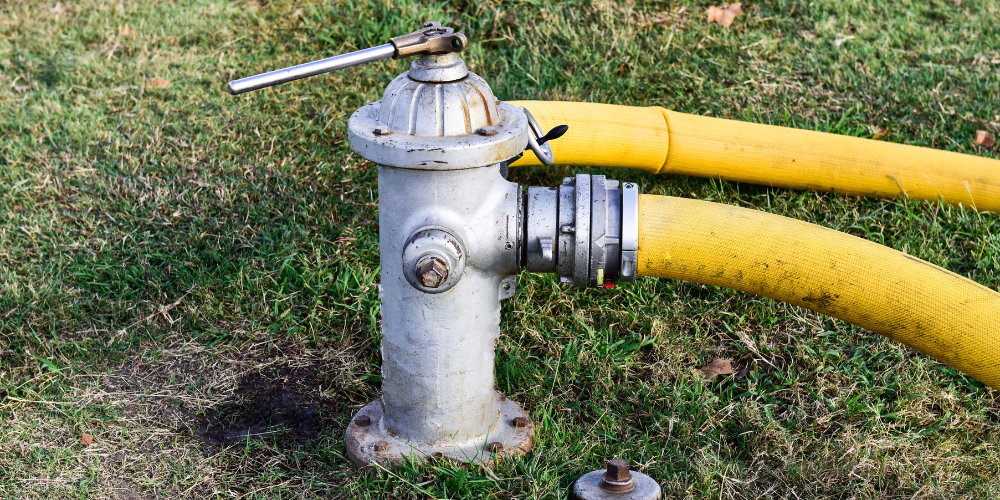
A fire chief facing an upcoming Insurance Services Office (ISO) evaluation may wonder how FlowMSP helps with ISO evaluation readiness. For departments that typically miss points in Water Supply, FlowMSP’s water asset management app can significantly help.
Certain factors will always be outside your control when it comes to water supply. Instead, focus on improving the areas where your personnel can make a difference. By logging your hydrant information and locations, conducting yearly inspections, marking your hydrants, and conducting flow testing, you can positively impact your PPC rating.
The Public Protection Classification (PPC) issued by Insurance Services Office, Inc. is a badge of honor for many fire departments. This classification represents hard work and dedication to excellence in fire suppression (Insurance Services Office, Inc., 2012).
Further, a department’s pursuit of an improved PPC can be used to justify important fire protection improvements, budgeting, planning, and more. Investing in programs and tools to help lower your PPC while protecting and equipping field personnel makes sense.
Water asset management tools such as FlowMSP Water influence the PPC by increasing points in the “Water Supply” section of the ISO evaluation. This section is worth 40 points of the total ISO evaluation’s 100 points, with subsections of points which contribute toward the 40.
Briefly, FlowMSP helps in these primary ways:
ISO evaluation readiness for fire flow testing includes logging annual hydrant inspections. According to the Fire Suppression Rating Schedule (FSRS), departments must maintain records of annual inspections to gain full credit. You can capture additional points if you conduct flushing and pressure tests as well (Insurance Services Office, Inc., 2012).
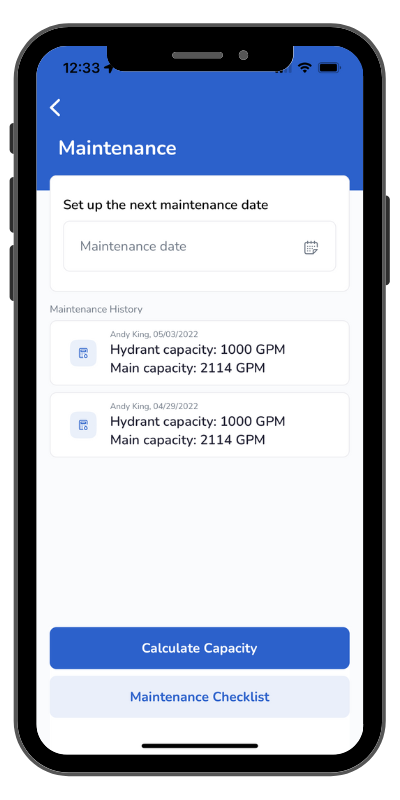
Using the FlowMSP Water app, either the fire department or the water department can log hydrant inspections, flushing, and pressure tests.
The app creates a date-stamped record which may be presented to ISO during the evaluation.
“Fire-flow tests should be conducted on all parts of the distribution system every 5 years to gain full credit for fire-flow testing” (Insurance Services Office, Inc., 2012). Easily calculate and log your fire flow tests in the field using FlowMSP.
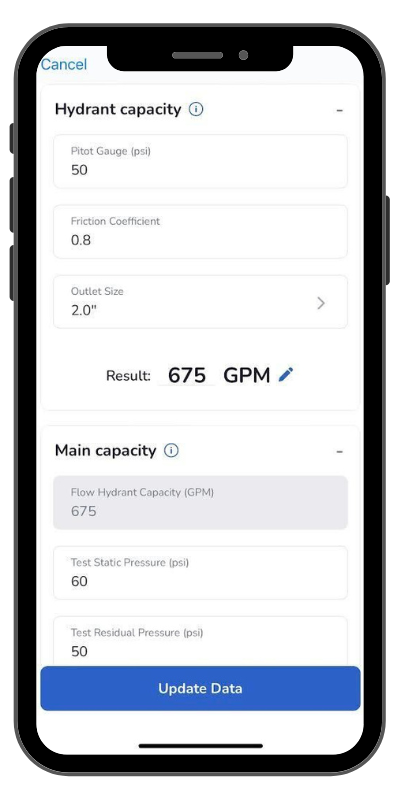
The FlowMSP Water app aids departments in fire-flow testing using Bernoulli’s Formula.
When conducting a two-hydrant flow test, the app equips you to calculate hydrant capacity in gallons per minute.
The results automatically color-code the hydrant icons on the FlowMSP map according to the NFPA 291 standard.
In addition to logging fire-flow testing frequency, you can capture points in this section if you maintain a hydrant marking program in accordance with the NFPA 291 or AWWA manual M17 standards.
The color-coding within FlowMSP’s hydrant map satisfies the ISO requirement for this. In addition, you may use the FlowMSP color-coded hydrant map as a reference in the field when marking hydrants.
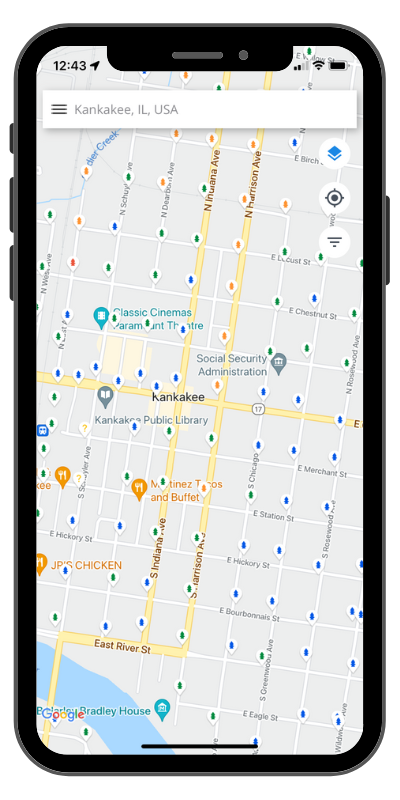
Beyond the ISO evaluation, the hydrant flow information and color-coding also aids fire department personnel who use the FlowMSP Fire app.
Any updates to FlowMSP Water hydrants also update FlowMSP Fire hydrants to aid incident commanders in tactical planning.
Another element the fire department can control for ISO evaluation readiness is cataloguing hydrant size, type, and installation. Using the FlowMSP Water app, you can log detailed information for each hydrant while conducting your hydrant inspections. Credit for Hydrants makes up part of the 30 points available for Water Supply.
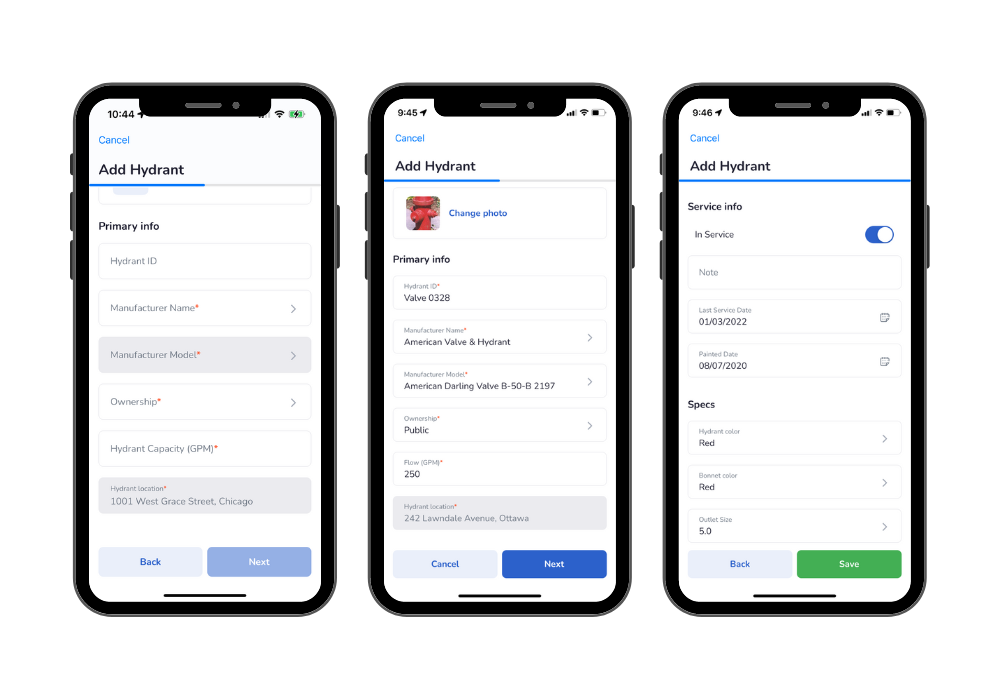
FlowMSP can generate a csv file with all your hydrant data, which you can present to your ISO evaluator.
Outside of the ISO evaluation, this information can give you leverage with your city council to request new hydrants. You can show a clear picture of where you are missing points due to insufficient water supply. Plus, you can show them exactly which hydrants should be replaced ahead of your next ISO evaluation.
This section is where the FlowMSP Fire app helps with ISO evaluation readiness for water supply. Because hydrant distribution relates to each hydrant’s proximity to buildings, use FlowMSP Fire for this part. All the hydrants you added in FlowMSP Water will also appear in your FlowMSP Fire app.
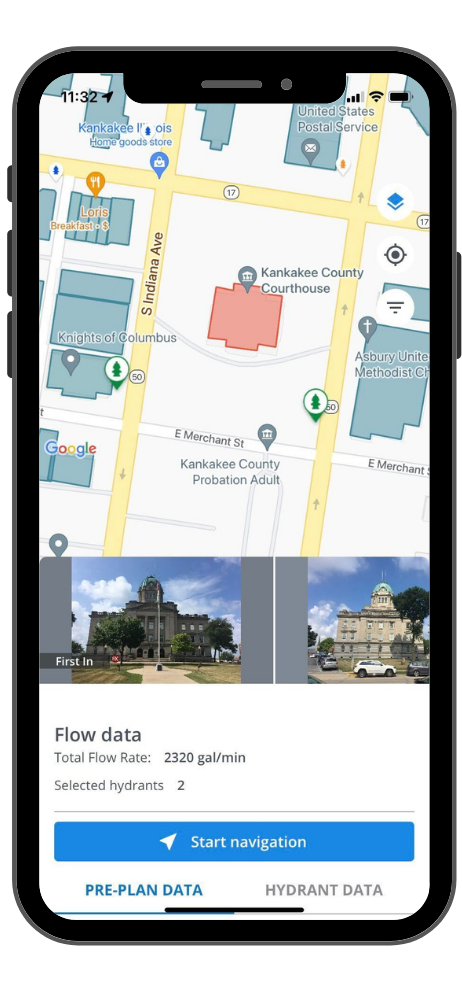
The FlowMSP Fire app automatically selects the hydrants with the highest gpms in closest proximity to each pre-planned building.
In addition, it sums up the fire flow from nearby hydrants to determine which ones will best satisfy the required fire flow.
Then, when the building is selected, the correct hydrant icons get bigger on the map for easy recognition.
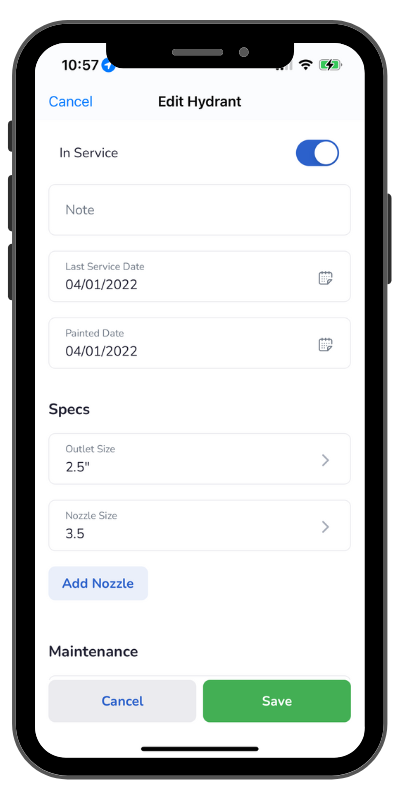
ISO may ask you about the outlets on your hydrants as a part of this section.
You may log each hydrant’s outlets using the FlowMSP Water app, indicating pumper outlet size and hose nozzle size for each hydrant.
ISO adds the Hydrant Inspection score to the Flow Testing score to equal Credit for Inspection and Fire-Flow Testing of Hydrants. Then, they add it to the Credit for Hydrants and the Credit for Supply System to yield the Credit for Water Supply.
This means the fire department can influence a significant portion of the Credit for Water Supply even if the city will not send people from the water department to do this work. By controlling the factors under your influence, you can prepare for the ISO evaluation and positively impact your PPC rating.
Departments that wish to lower their PPC can prepare for the ISO evaluation with help from FlowMSP’s implementation team. By making the team aware of specific ISO-related goals, you cue us to adjust strategy and training sessions to suit your needs.
Using the FlowMSP Fire app can also help you with ISO evaluation readiness. To learn more about how FlowMSP Fire can help you gain points in pre-incident planning and training, visit our FlowMSP Fire ISO Evaluation Readiness page.
PPC improvement through water supply management is possible. Request a web demo to learn more about how FlowMSP can help your department move forward.
Reference
Insurance Services Office, Inc. (2012). Fire Suppression Rating Schedule.
Disclaimer
FlowMSP, Inc. is an independent company. We are not affiliated, associated, authorized, endorsed by, or in any way officially connected with any other company, agency or government agency. All product and company names are trademarks™ or registered® trademarks of their respective holders. Use of them does not imply any affiliation with or endorsement by them.
The information posted represents the views and opinions of FlowMSP, Inc. and has been made available for informational and educational purposes only. The information on this website is provided “as is” without any representations or warranties, express or implied.